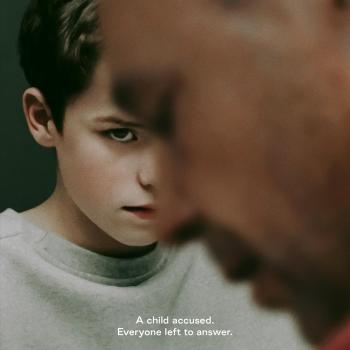In 1889, a group of young Catholic sisters from Italy called the Missionaries of the Sacred Heart of Jesus disembarked in New York. Led by their determined 39-year-old superior, Mother Francis Xavier Cabrini (Cristina Dell’Anna), these sisters, inspired by their mission to spread devotion to the Sacred Heart of Jesus by living the spiritual and corporal works of mercy (Matthew 25), were met with disdain and prejudice by both church and civil authorities in the persons of Archbishop Michael Corrigan (David Morse) and Mayor Gould (John Lithgow).
Already disappointed at being sent to New York instead of China by Pope Leo XIII (Giancarlo Giannini), the sisters began their work in the Five Points section of Manhattan, a crowded slum inhabited by desperately poor immigrants with streets of slime, unsafe buildings, and unsanitary conditions leading to typhoid and death.
The travails of orphans are played out through the story of one boy, Paolo (Federico Lelapi), who loses everything when his young mother dies of typhoid. Meanwhile, the sisters begin to teach and nurse immigrants and search for a better place for orphans to flourish.
I enjoyed “Cabrini” very much, although undoubtedly, for length (the film only covers the first years of Mother Cabrini’s life in New York), my favorite story about Mother Cabrini’s sharp wit and business acumen was left out. Several years later, when the sisters purchased land in Chicago for what would become Columbus Hospital (1905 -2002), she questioned the property measurements in the contract. At night, she and some of the sisters tied shoelaces together to measure the land, and sure enough, discrepancies were found and corrected in the sisters’ favor. This anecdote bears out what she said (or wrote) about their experience in the U.S. and is vividly shown in the film: “We are bold or we die. This is how we learn to live in America.”
Performances by the principal characters are quite good. The one criticism I have of the film overall is the lack of joy shown among the sisters. Except in one scene, there are just a few smiles here and there. Religious life is hard, and as we know from stories of our own community’s (Daughters of St Paul) first years in New York during the Depression, the lack of ecclesial welcome and support as well as living at the poverty level in very trying conditions (having to shake the cockroaches out of your shoes in the morning before putting them on). But despite hardships, we know from their stories that the sisters laughed and always found reasons for joy. I would have liked more insight into Mother Cabrini’s sisters’ lives together to bolster the film’s theme of hope.
The plight of immigrants, racial prejudice, American Nativism, and anti-Catholicism are shown in the film, and it is easy to make connections to today’s reality. The tension created by the story’s patriarchy is front and center, but I liked Mother Cabrini’s response when Mayor Gould tells her:” It’s a shame you are a woman, Mother. You would have made an excellent man.” She replies, “No man could ever do what we do.”
The film is well directed by Alejandro Monteverde, who brought us “Sound of Freedom” in 2023, also from Angel Studios. While “Sound of Freedom” is an important film about rescuing children from sex trafficking, the various controversies that arose surrounding its release detracted, I think, from its goal to raise awareness about this global scourge and how to address it in the best ways. “Cabrini” and its release on March 8, International Women’s Day, tells the heroic, humble story of the first naturalized U.S. citizen to be canonized, indeed one woman’s fight, one community’s struggle for equality, health, and happiness of immigrant orphans. The fact that the main character, Mother Cabrini, is “supported” by an almost all-male cast shows a historical and even contemporary reality. Still, it also reflects that an all-male crew made the film. If more women were involved in the production, cast (how many women have names compared to the men?), and crew, the film would be even more robust and, dare I say, better.
The cinematography by Gorka Gómez Andreu is warm, beautiful and expertly framed but is almost consistently “painted” in brown or subdued hues. While this signals that the story happened more than a century ago and that times were hard, I kept looking for a little more light.
The soundtrack “scores” points with familiar songs and artists, especially with the original “Dare to Dream” by Andrea Bocelli and his daughter Virginia. It’s a moving and beautiful tribute to Italian immigrants and the Missionaries of the Sacred Heart (and other congregations from Italy) who came to serve them first and the millions more immigrants to follow who make up America.
Overall, “Cabrini” is a film that contributes to the telling of America’s history, a film that Catholic audiences and general audiences will appreciate. I congratulate the filmmakers on getting the sisters’ habits right! The film invites us to live today’s spiritual and corporal works of mercy in community and society. It shows us that obstacles can be overcome by wit, prayer, goodness, and the all-embracing love of one’s neighbor.














